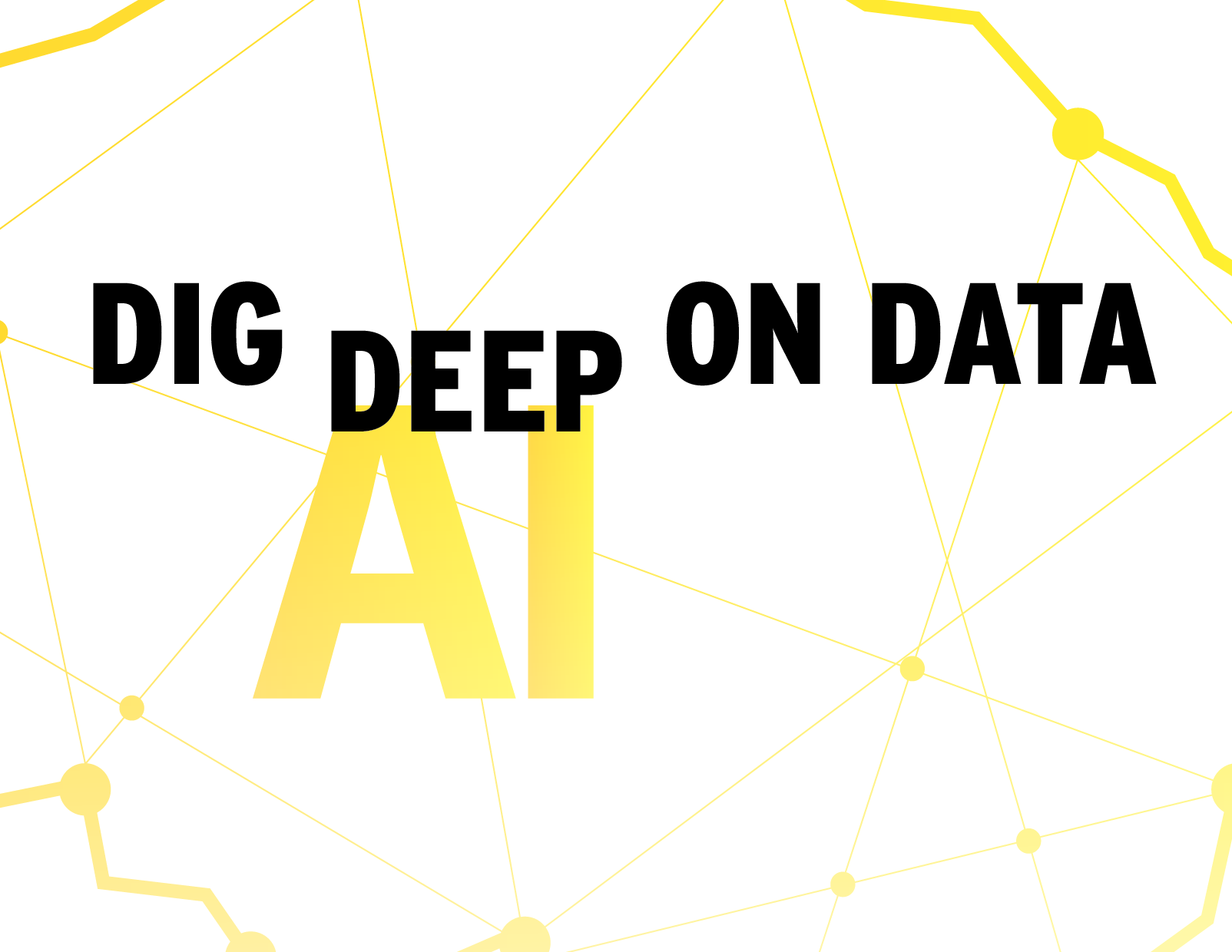Resort operators accumulate vast amounts of data across operations like F&B outlets, ski school, ticketing, season passes, and CRM systems, often storing it in siloed, on-premises data centers. While this practice keeps data secure, it fails to unlock its potential for driving innovation.
By not leveraging this data for predictive analytics, personalized guest experiences, or operational efficiency, resorts miss opportunities to enhance profitability and competitiveness in an increasingly data-driven industry.
Moving forward, embracing cloud-based solutions with integrated AI is essential for transforming this untapped resource into actionable insight.
Make Sense of Your Data
Trying to leverage disorganized data is like searching for a needle in a haystack, because all the valuable insights you need are buried in a chaotic pile of information. Without consolidating and organizing your data, you’re left sifting through disconnected, messy sources, hoping to stumble upon something useful.
This inefficiency makes it nearly impossible to uncover actionable insights, leaving valuable opportunities—like improving guest experiences or streamlining operations—hidden and untapped.
To make sense of your data, you must do three things:
Bring it together: Use a single system to combine data from all areas (ticketing, F&B, ski school, etc.) so it’s all in one place, making it easier to see the big picture.
Clean it up: Organize and clean the data to remove duplicates and make it consistent, so it’s ready to use.
Focus on what matters: Start with the data that directly impacts your business, like guest preferences or operational trends, and use it to make smarter decisions about staffing, revenue predictions, and skier visits.
How Do I Do This?
“Dave,” you say, “I need actionable insights that I can take back to my leaders! How can I do this?”
Here are four different data analytics platforms that can help you combine, organize, and analyze your data.
Databricks
What it does: As a unified data analytics platform, Databricks integrates data engineering, machine learning, and business intelligence into one environment.
Why it works: Databricks combines data integration, cleaning, and advanced analytics with built-in AI and machine learning tools, making it particularly useful for organizations looking to centralize their data workflows.
Snowflake
What it does: This cloud-based data platform supports data integration, transformation, and querying, as well as seamless collaboration between teams.
Why it works: With its ability to handle structured and semi-structured data, Snowflake can serve as a one-stop shop for storing, cleaning, and analyzing data.
Microsoft Azure
What it does: Integrates big data and data warehousing with analytics and AI capabilities when used with Azure Synapse Analytics.
Why it works: It enables a seamless workflow from data ingestion to AI-powered insights within the Azure ecosystem. (If you’re an existing Microsoft shop, this might be an easier solution.)
AWS SageMaker
What it does: Provides tools for data storage, transformation, and machine learning within a single environment.
Why it works: AWS enables data consolidation through its Data Lake solution, while SageMaker allows for advanced AI and machine learning directly on the platform.
I am not endorsing any of these solutions. Before you go down the enterprise software rabbit hole, consider this advice from Data Scientific CEO Cassie Kozykrov: “Like most things in life, the best approach in enterprise is to start not with the technology, but with the business problem you’re trying to solve.”
Focus On What Matters
Using these systems can get expensive fast, because the more data you include, the more it costs to store, process queries, and power the compute resources needed for AI models. That’s another reason why it’s important to be judicious about the data you input to the system, i.e., focus on what matters rather than including data that isn’t useful to your business. The costs associated with the latter is like buying a bigger garage for stuff you don’t need.
There are myriad benefits to being strategic about the data you are looking to leverage. Using AI to organize and analyze data that directly impacts your operation can unlock resort insights such as:
- Revenue prediction: Wake up every morning with an estimate for daily revenue, yield, and net sales.
- Skier visit prediction: Get a more accurate prediction of how many people you’ll have on the hill. This helps inform operations and staffing decisions.
- Staffing estimates: If you know predicted visitation and revenue, you can more appropriately staff your resort.
- Better guest service: Leverage collected guest data to create personalized experiences, anticipate needs, and resolve issues proactively. (Guests have been feeding us data for years, and all we’ve used it for are sales emails and ads.)
Embracing AI
You can also do incredible things without data warehouses and expensive tools.
Save time. In my own role as chief innovation officer for SNOW Partners, using ChatGPT allowed me to quickly analyze and interpret visitation data without needing advanced Excel skills or waiting for our business intelligence team to process the request.
In just a few moments, I was able to filter, calculate, and compare visitation trends at our indoor ski area Big SNOW, saving valuable time while gaining actionable insights that could have taken significantly longer to find using traditional methods.
Many other industry leaders are already embracing and leveraging AI for data analytics. For example, Michael Rueckert, director of marketing for Grand America Resorts, uses Claude Workspaces (Anthropic’s AI assistant) to analyze and report on NPS trends for one of the company’s ski resorts, Snowbasin, Utah, for which he is also director of marketing.
This task, which typically involves sifting through multiple Qualtrics reports and assembling findings for the leadership team, is now streamlined. With a well-crafted prompt to extract qualitative and quantitative guest experience survey insights directly from uploaded NPS data, Claude generates a weekly report with graphs and visuals written in the style of the marketing director.
“By leveraging it (AI), we’ve dramatically increased productivity across our team,” says Rueckert. “What seemed impossible [for me] just a few years ago—leading marketing for multiple properties across three states while teaching as a college professor—has become achievable.”
Connect with guests. Susie English, vice president of marketing at Deer Valley, Utah, uses AI-powered analytics to enhance the way the resort connects with guests.
“We, currently, are already using it to analyze data in real time, gaining deeper insights into guest preferences and crafting hyper-personalized messaging that resonates with different audiences,” says English. “AI is also streamlining processes like campaign optimization, giving us more time to focus on strategic thinking and creating impactful guest experiences.”
“Looking ahead,” she adds, “AI will enable us to anticipate trends, adapt strategies proactively, and foster stronger connections with our audience. It’s not just a tool—it’s a catalyst for smarter, faster, and more meaningful marketing that enhances the Deer Valley Difference.”
Be Cautious
AI tools are far from perfect, and in many cases, they can’t replace the human touch.
In photo editing, says Maddy Hansen, digital brand manager for Sunday River, Maine, “I’ve played with [AI] generative fill a handful of times, but find that I can manipulate a picture better than what AI is presenting me. I’ve got big roots in journalism, so the idea of photographic integrity means a lot to me, too.”
“I believe in embracing AI to help make informed data-driven decisions, streamline processes, and become more efficient. I don’t believe in AI replacing the human touch that artists, writers, and a content team bring,” echoes Nick Como, vice president of marketing at Sundance Resort, Utah.
Still, he says, “AI is the world’s future, and the industries we compete with will certainly use it to win market share, so we also need to embrace these tools—cautiously.”
What it means: AI has vast potential to help resort operators unlock the opportunities and insights hidden in the extensive data sets we already have waiting at our fingertips.
This article was adapted from Dave Amirault’s National Ski Areas Association 2025 Western Winter Conference education session, “Putting AI to Work: Insights, Tools & Tactics for Resorts





